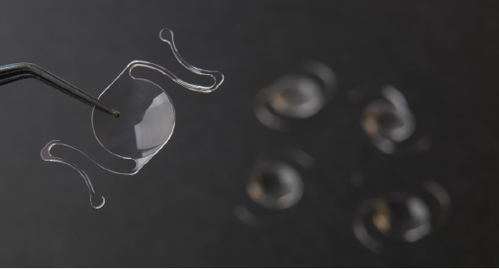IOL
Changing Patterns for IOL Exchange
Delving deeper into IOL explantations

Dermot McGrath
Published: Thursday, June 1, 2023
Dermot McGrath reports
Advances in cataract surgery techniques and technologies combined with improved IOL designs and materials have lowered the rate of IOL exchange surgery and altered the percentages of its main indications, according to Dr Matthias Gerl.
“IOL dislocation remains one of the most common indications for IOL explantation, followed by incorrect IOL power, patient dissatisfaction due to halos and glare, IOL opacification, and capsular contraction,” he said. “In the past, the principal indications for IOL exchange surgery were IOL dislocation, anterior uveitis, and unpredicted high refractive errors. However, IOL exchange surgery today appears to have a good safety profile and good visual outcomes for the majority of these patients.”
Dr Gerl’s retrospective study included more than 26,000 eyes that underwent phacoemulsification with IOL implantation between 2016 and 2022 at the Augenklinik in Ahaus, Germany. The goal was to assess the incidence and causes of IOL exchange after cataract surgery, in addition to reporting the visual outcomes, complications, and the different techniques used for secondary IOL implantation.
Over six years, 26,377 eyes underwent cataract surgery—of which 59 eyes had an IOL exchange, with a cumulative incidence of IOL exchange of 2.2 per 1,000 cataract operations.
 “This rate of IOL exchange is quite low and aligns with the findings from other studies, which have reported a range between 0.19% to 0.77%,” Dr Gerl said.
“This rate of IOL exchange is quite low and aligns with the findings from other studies, which have reported a range between 0.19% to 0.77%,” Dr Gerl said.
The main indication for IOL explantation was IOL dislocation in 24 cases (41%), followed by incorrect IOL power in 21 (35%), patient dissatisfaction due to halos and glare in 9 (15%), IOL opacification in 4 (8%), and capsular contraction in 1 patient (2%).
Glaucoma was the most common pre-existing ocular condition, accounting for 11 (19%) of all cases, followed by high myopia in 10 (16%), pseudoexfoliation syndrome in 6 (10%), diabetic retinopathy in 4 (7%), floppy iris in 5 (8.5%), and age-related macular degeneration in 3 (5%).
The types of secondary implanted IOLs were monofocal in 32%, iris-claw in 30%, three-piece in 20%, EDOF in 13%, and multifocal in 3%. The IOL was implanted in the capsular bag in 56% of cases, followed by iris fixation in 30% and sulcus in 14%. The mean visual acuity improved from 0.29 (logMAR) preoperatively to 0.18 after implantation, while the mean IOP increased from 15.13 mmHg before surgery to 15.83 mmHg after surgery.
The mean time interval between the cataract surgery and the IOL exchange was 10.5 months. Vitreous prolapse was the most common intraoperative complication in 35%, followed by capsular tear (10%) and zonular dehiscence (3%). Secondary cataract was the most common postoperative complication, occurring in 15% of cases, followed by IOP spike (8%), cystoid macular oedema (3%), and corneal decompensation (2%).
Dr Gerl gave this presentation at the 27th ESCRS Winter Meeting in Vilamoura, Portugal.
Matthias Gerl MD is an ophthalmologist at Augenklinik in Ahaus, Germany. m.gerl@augenklinik.de
